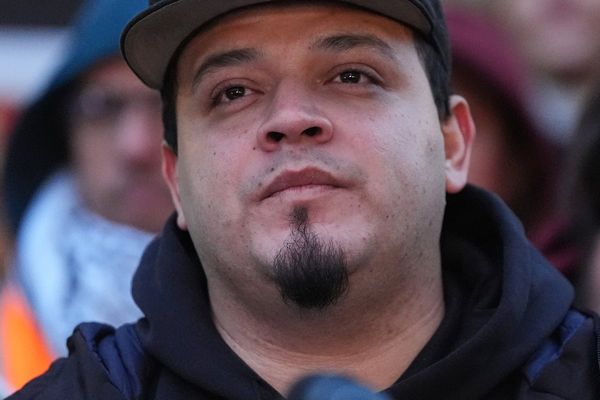A FEDERAL appeals court ruled on Friday that US President Donald Trump had no legal right to impose sweeping tariffs on almost every country on earth, but left in place for now his effort to build a protectionist wall around the American economy.
The ruling from the US Court of Appeals for the Federal Circuit found Trump overstepped his authority under an emergency powers law, a major legal blow that largely upheld a May decision by a specialised federal trade court in New York.
“It seems unlikely that Congress intended to … grant the president unlimited authority to impose tariffs,” the judges wrote in a 7-4 ruling.
But they did not strike down the tariffs immediately, allowing his administration until mid-October to appeal to the Supreme Court. The US president has said he will.
“If allowed to stand, this Decision would literally destroy the United States of America,” Trump wrote on his social media platform.
White House spokesman Kush Desai said Trump had acted lawfully, and “we look forward to ultimate victory on this matter”.
A lawyer for small businesses affected by the tariffs, meanwhile, said the ruling shows Trump does not have unlimited power to impose tariffs on his own.
“This decision protects American businesses and consumers from the uncertainty and harm caused by these unlawful tariffs,” said Jeffrey Schwab, director of litigation at the Liberty Justice Centre.
Still, it remains unclear whether businesses will see any effects from the decision, said National Foreign Trade Council president Jake Colvin.
“If these tariffs are ultimately struck down, it ought to serve as a wake-up call for Congress to reclaim its constitutional mandate to regulate duties and bring some long-term certainty for US businesses and relief for consumers,” Colvin said.
The ruling complicates Trump’s ambitions to upend decades of American trade policy completely on his own.
Trump has alternative laws for imposing import taxes, but they would limit the speed and severity with which he could act.
His tariffs, and the erratic way he has rolled them out, have shaken global markets, alienated US trading partners and allies and raised fears of higher prices and slower economic growth.
But he has also used the levies to pressure the European Union, Japan and other countries into accepting one-sided trade deals and to bring tens of billions of dollars into the federal Treasury to help pay for the massive tax cuts he signed into law on July 4.
“The administration could lose a pillar of its negotiating strategy,” Ashley Akers, senior counsel at the Holland & Knight law firm and a former Justice Department trial lawyer, said before the appeals court decision.
A dissent from the judges who disagreed with Friday’s ruling clears a possible legal path for Trump, concluding that the 1977 law allowing for emergency actions “is not an unconstitutional delegation of legislative authority under the Supreme Court’s decisions”, which have allowed the legislature to grant some tariff authorities to the president.
The government has argued that if the tariffs are struck down, it might have to refund some of the import taxes that it has collected, delivering a financial blow to the US Treasury.
Revenue from tariffs now totals 159 billion dollars (£118 billion), more than double what it was at the same point the year before.
Indeed, the Justice Department warned in a legal filing this month that revoking the tariffs could mean “financial ruin” for the United States.
“For all the tariffs that have been collected under IEEPA, you’re going to see folks request refunds and more refunds,” said trade lawyer Ryan Majerus, a partner at King & Spalding and a former White House economic adviser.
Attorney general Pam Bondi, meanwhile, accused the judges of interfering with the president’s central role in foreign policy and vowed to appeal.
The ruling involves two sets of import taxes, both of which Trump justified by declaring a national emergency under the 1977 International Emergency Economic Powers Act (IEEPA):
– The sweeping tariffs he announced on April 2, which he called Liberation Day, when he imposed “reciprocal” tariffs of up to 50% on countries with which the US runs trade deficits and a “baseline” 10% tariff on just about everyone else.
Those tariff rates have since been revised by Trump, in some cases after trade negotiations, and generally came into effect on August 7.
– The “trafficking tariffs” he announced on February 1 on imports from Canada, China and Mexico and later refined.
These were designed to get those countries to do more to stop what he declared a national emergency: the illegal flow of drugs and immigrants across their borders into the US.
The Constitution gives Congress the power to impose taxes, including tariffs. But over the decades, lawmakers have ceded authority to the president, and Trump has made the most of the power vacuum.







